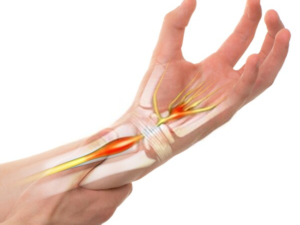Carpal Tunnel Surgery
Carpal Tunnel Surgery In Iran
Best carpal tunnel surgery hospital in Iran
 A large number of Iranian and foreign patients are going under carpal tunnel surgery in Iran each month. carpal tunnel surgery in Iran is on top of the middle-east regarding its skilled specialists and surgeons.
A large number of Iranian and foreign patients are going under carpal tunnel surgery in Iran each month. carpal tunnel surgery in Iran is on top of the middle-east regarding its skilled specialists and surgeons.
Here are the best hospitals for carpal tunnel surgery in Iran:
- Treata Professional Hospital
- Gandi Hospital
- Moheb Mehr Hospital
Carpal tunnel surgery cost in Iran
There is a significant difference between the cost of carpal tunnel surgery in Iran and other countries. The most important factors for the low price of it in Iran are:
- A large number of carpal tunnel surgery hospitals in Iran.
- A large number of applicants for carpal tunnel surgery in Iran.
Carpal tunnel surgery cost in Iran varies depending on the carpal tunnel surgery and the hospital. An average cost of carpal tunnel surgery in Iran is $1500.
Carpal tunnel surgery cost in Iran in comparison with other countries
This surgery costs $ in the U.S., $ in Europe, $ in Thailand and $ in Turkey.
Best carpal tunnel surgery surgeon in Iran
A lot of orthopaedic surgeries are being performed each year in Iran. Experienced Iranian doctors with an excellent record are performing the operations. One of the most important factors for choosing a good surgeon for carpal tunnel surgery in Iran is a doctor has done many carpal tunnel surgery. You can find the best doctors for carpal tunnel surgery in Iran on our website by following their different experiences.
Why should you travel to Iran for a carpal tunnel surgery?
Many patients travel to Iran for carpal tunnel surgery. One of the reasons for this matter is Iranian specialists and surgeons who have high surgery success rates.
- Low cost of carpal tunnel surgery in Iran
- Low cost of accommodation in Iran
- Well experienced doctors
- The high number of carpal tunnel surgery in Iran
Carpal tunnel surgery centres accordant with today's European standards are performing the highest quality operations in Iran. Another reason for carpal tunnel surgery in Iran is its lower cost compared to other countries.
How long should I stay for carpal tunnel surgery in Iran?
About Carpal Tunnel Surgery
 The carpal tunnel is a small passageway on the palm side of the wrist. Carpal tunnel syndrome (CTS) is a medical condition due to compression of the median nerve as it travels through the wrist at the carpal tunnel. The main symptoms are a pain, numbness and tingling in the thumb, index finger, middle finger and the thumb side of the ring fingers. If left untreated, carpal tunnel syndrome can lead to weakness and lack of coordination in fingers and thumb. Treatment can relieve pressure on the nerve and, for most people, eliminate their symptoms. Treatments like wrist braces and corticosteroids can help, but in more severe cases, they may need surgery.
The carpal tunnel is a small passageway on the palm side of the wrist. Carpal tunnel syndrome (CTS) is a medical condition due to compression of the median nerve as it travels through the wrist at the carpal tunnel. The main symptoms are a pain, numbness and tingling in the thumb, index finger, middle finger and the thumb side of the ring fingers. If left untreated, carpal tunnel syndrome can lead to weakness and lack of coordination in fingers and thumb. Treatment can relieve pressure on the nerve and, for most people, eliminate their symptoms. Treatments like wrist braces and corticosteroids can help, but in more severe cases, they may need surgery.
Types of Carpal Tunnel Surgery
• Open surgery involves a larger cut, or incision -- up to 2 inches from wrist to palm. • Endoscopic surgery, the surgeon makes one opening in the wrist. He may also make one in the arm. These cuts are smaller, about a half-inch each. He then places a tiny camera in one of the openings to guide him as he cuts the ligament.
Recommended for
• Patients with Carpal tunnel syndrome (CTS)
Before Carpal Tunnel Surgery
The surgeon takes a medical history and asks for some tests. Smoking should be stopped a few weeks before and after the surgery. Smoking will slow down the healing process. Patients should stop taking Aspirin, anti-inflammatory medicines and herbal supplements before the surgery since these medicines increase the risk of bleeding.
During Carpal Tunnel Surgery
The patients undergo local anaesthesia during the procedure. The surgery takes about 10 to 30 minutes. When the operation is finished, the doctor stitches the openings shut and puts a large bandage on the wrist. This protects the wound and keeps from using the wrist.
Recovery
Patients can go home the same day after the procedure. Patients may feel some pain after the procedure. The surgeon may prescribe some painkillers and antibiotics. They may get relief from symptoms the same day as the surgery, but complete healing takes longer. They should expect to have pain, swelling, and stiffness after the operation. The bandage will stay on for 1-2 weeks. The doctor may give some exercises to do during this time to move fingers and keep them from getting too stiff. Patients can use their hand lightly in the first 2 weeks, but it helps to avoid too much strain. The doctor will talk to the patient about when they can go back to work and whether they’ll be limited in what they can do.
